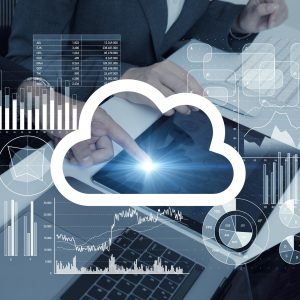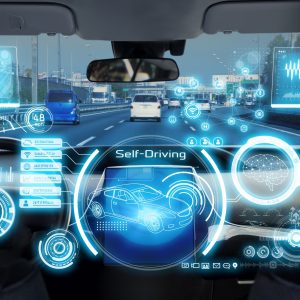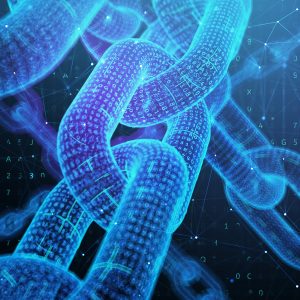We often use shorthand acronyms and metaphors to describe technology. The word “stack” became popular during the early days of the World Wide Web, to describe the set of technologies required to make it all work. The acronym “LAMP” describes the stack of Linux the operating system; Apache the web server; MySQL the database manager; and Python the scripting language. Each technology by itself was useful, but when the four were brought together, they became a development platform for the revolution we now call Web 1.0.
More recently another stack acronym became popular, called by various writers either CAMS and SMAC, for Cloud, Analytics, Mobile, and  Social. Used together, this stack was the foundation for the rise of what is sometimes called Web 2.0. Smartphones, smart assistants like Siri or Alexa, cloud-based services, deep learning, and social media all became possible because of the CAMS stack. Closer to home in manufacturing, CAMS became the innovation platform for industrial robots, plant site and construction drones, and the Internet of Things (IoT).
Social. Used together, this stack was the foundation for the rise of what is sometimes called Web 2.0. Smartphones, smart assistants like Siri or Alexa, cloud-based services, deep learning, and social media all became possible because of the CAMS stack. Closer to home in manufacturing, CAMS became the innovation platform for industrial robots, plant site and construction drones, and the Internet of Things (IoT).
The FAANG companies (Facebook, Apple, Amazon, Netflix, and Google) became giants because of their first-mover use of CAMS. These four technologies became a synergistic platform because of how they interact with data: Cloud makes data more widely available; Analytics makes data more valuable; Mobile makes data more consumable; and Social makes data more actionable.
From stack to super-stack
Note two things. First, LAMP describes four specific software products, while CAMS describes four types of software technology. Think of CAMS as a super-stack, or stack of stacks.
Second, these stacks — and their acronyms — were named after the fact, when it became obvious what they were and how they contributed to progress.
I believe we are in a similar period today, where a super-stack is coming together. Seeing how previous stacks became the foundation for revolutionary change in recent years provides insight to help understand how the next stack is coming together.
The next stack that is becoming an engine of innovation has five elements: applied intelligence; real-time interaction; independent operational capabilities; autonomous behavior; distributed deployment. I refer to the stack as ROADI. (I’d prefer iROAD, but Apple seems to have cornered the market on names starting with “i.”) First two stacks gave us an empowered Internet; this new super-stack is the foundation for a major shift to what I call the Autonomy Economy.
The emerging Autonomy Economy
The clearest example of the emerging Autonomy Economy comes from the automotive industry. Self-driving cars must possess intelligent and autonomous behavior, and always respond in real time to the environment. Their actions are based on a refined notion of trusted behavior. The necessary computation and connectivity cannot be centralized in a server or even a cloud; it must take place in each vehicle and in every other object on or near the road.
autonomous behavior, and always respond in real time to the environment. Their actions are based on a refined notion of trusted behavior. The necessary computation and connectivity cannot be centralized in a server or even a cloud; it must take place in each vehicle and in every other object on or near the road.
There are several innovations behind the emerging ROADI stack and the growth of an Autonomy Economy. Graphics processing units (GPUs) have far exceeded their original purpose and are now more responsible for computational innovation than CPUs. Also known as GP-GPUs (general purpose GPUs), they give autonomous cars their vision and their “knowledge” of the world, processing millions of bits of information every second to provide real-world interactive capabilities.
The IoT and the industrial IoT (IIoT) are abstractions that describe various interconnected technologies, including distributed computation applications known as edge computing, fog computing, the more established cloud computing and such emerging technologies as microscopic CPUs. As the tools mature, IoT/IIoT devices will exhibit autonomous, decentralized behavior—interacting with each other without the need for centralized control.
Deep learning as an application of artificial intelligence has changed how we use big data. It allows the emergence of behavior we describe as intelligent, providing millions of autonomous devices with the logic to operate in real time.
Blockchain technology will provide new elements crucial to autonomous distributed intelligence as the disintermediation of trust and an open  transaction ledger. Blockchain uses a cryptographic ledger to bring immutable proof and automated smart contracts into the stack. For example: If a self-driving car is in an accident, a blockchain-based smart contract could be automatically triggered, relationally binding it to any other smart objects involved in the accident and the physical jurisdiction. A record of the car’s recent behavior will become part of the public record on the blockchain ledger, making it easier to assign responsibility for the accident even if there were no human witnesses.
transaction ledger. Blockchain uses a cryptographic ledger to bring immutable proof and automated smart contracts into the stack. For example: If a self-driving car is in an accident, a blockchain-based smart contract could be automatically triggered, relationally binding it to any other smart objects involved in the accident and the physical jurisdiction. A record of the car’s recent behavior will become part of the public record on the blockchain ledger, making it easier to assign responsibility for the accident even if there were no human witnesses.
Immersive and interactive display technologies such as augmented reality, machine vision and heads-up displays will provide a conduit for human interaction with ROADI technologies.
Ethical Considerations
Every major technical innovation requires society to respond to new ideas. Thirteen years after the launch of the iPhone, we are still trying to understand how smartphones influence behavior. When smart, connected products become ROADI products, there are new considerations. In an autonomy economy, can robots witness a crime? Can a smart factory order supplies without human intervention? Will immutable records stand up in court?
At its best, engineering takes legal, ethical and moral parameters into consideration. How industry responds to these social meta-specifications will likely prove to be the biggest hurdle or the biggest asset in the development of ROADI products and services, and the rise of an Autonomy Economy.
##